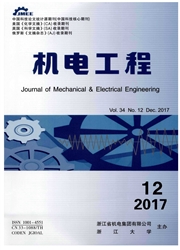

 中文摘要:
中文摘要:
针对脉冲红外热成像对复合材料的无损检测能力问题,利用有限元数值分析法模拟了脉冲加热红外成像无损检测过程。建立了“在复合材料上表面施加不同的热流边界条件”,而在其下表面施加自然对流换热边界条件的有限元模型,研究了不同复合材料内部缺陷对材料表面温度分布产生的差别,具体研究了脉冲形状、脉冲加热时间、缺陷类型等因素对含有平底孔缺陷复合材料表面温差变化和对比度变化的影响。研究结果表明,缺陷深度越浅且越大,表面温差和对比度会越大;而热流量越大,表面温差越大,但对比度不变。该有限元模拟为研究脉冲加热红外热成像的复合材料缺陷检测提供了数值模型。
 英文摘要:
英文摘要:
In order to ensure the detection capability of pulsed infrared thermography (PIT) for composites, finite element method (FEM) was employed to mimic non-destructive testing (NDT) of composites using pulsed infrared thermography. FEM models with different heat flux boundary conditions applied to the upper surface of the sample and with natural convective heat transfer boundary condition applied to the bottom surface, were established. Different temperature distributions on the surface of composites were investigated due to different internal defects. The parameters such as pulse shape, heating time, and defect material, in term of their influence on the temperature distribution and contrast on the surface of defective composites was discussed. The experimental results demonstrate that the temperature difference and contrast of composites surface would increase with the increasing of flaw depth and size whilst larger heat flux density would result in larger temperature difference but no effect on the contrast. FEM can provide the numerical model for PIT based defect detection of composites
 同期刊论文项目
同期刊论文项目
 同项目期刊论文
同项目期刊论文
 Nonlinear thermo-mechanical coupled modeling for the analysis of stress distribution in air-plasma-s
Nonlinear thermo-mechanical coupled modeling for the analysis of stress distribution in air-plasma-s 期刊信息
期刊信息
